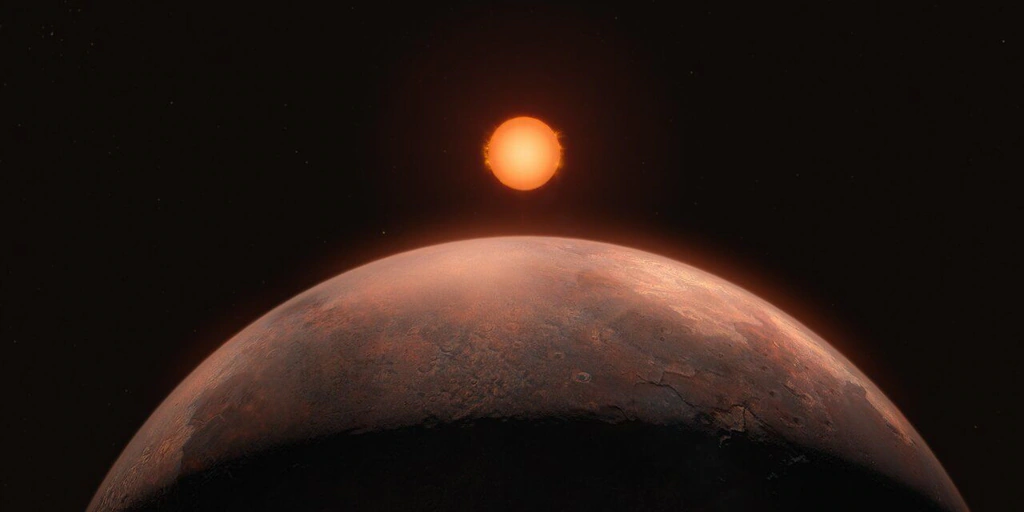A team led by Spanish researchers has discovered a planet orbiting Barnard, the closest lone star to our Sun, located just six light years away. Called Barnard b, this new exoplanet – as the worlds beyond our solar system are known – is much smaller than Earth and one of the lowest mass known. Located very close to its star, its year lasts just over three Earth days. His conditions are hellish, but perhaps he is not alone. The team’s observations also point to the existence of three other planet candidates around the same star.
Barnard’s Star is the second closest star system (after the Alpha Centauri group of three stars) and the closest single star to us. Due to its proximity, it is a prime target in the search for Earth-like exoplanets. Despite a promising detection in 2018, until now no planets had been confirmed orbiting it.
The discovery of this new exoplanet announced in an article published this Tuesday in the journal ‘Astronomy & Astrophysics’ is the result of observations made during the last five years with the Very Large Telescope (VLT) of the European Southern Observatory (ESO), located at the Paranal Observatory in Chile.
The team was looking for signs of possible exoplanets within Barnard’s Star’s habitable or temperate zone, the range where liquid water may exist on the planet’s surface. Red dwarfs like Barnard’s Star are often targeted by astronomers, as low-mass rocky planets are easier to detect there than around larger Sun-like stars.
hell
Barnard b is one of the lowest-mass exoplanets known and one of the few known with a mass less than Earth, but it is twenty times closer to its star than Mercury is to the Sun, making its orbit very tight. , only last 3.15 Earth days. Being so close, its average surface temperature reaches 125 C. We believe that one side of the planet faces Barnard permanently, so it would be even much hotter, while the other would be much colder. These conditions bring it much closer to Mercury than to Earth. In no way can we talk about habitability, Alejandro Surez Mascareo, researcher at the Institute of Astrophysics of the Canary Islands (IAC) and co-author of the study, explains to this newspaper. Although the star is about 2,500 degrees cooler than our Sun, it is too hot there to maintain liquid water on the surface.
Finding Barnard b has been quite difficult because it is very small, much smaller than Earth, says the astrophysicist. For their observations, the team used Espresso, a high-precision instrument designed to measure the wobble of a star caused by the gravitational pull of one or more orbiting planets. This is called the radial velocity method. The planet moves its star slightly as it orbits it. We measure the change in the speed of the star, and if the signal repeats itself over and over again, there is a planet. In this case, there is a repeating signal of half a meter per second, less than two km per hour. By comparison, the speed of a person walking is five or six km per hour, he comments.
The results obtained from these observations were confirmed by data from other instruments also specialized in the search for exoplanets: HARPS at ESO’s La Silla Observatory, HARPS-Nthe Roque de Los Muchachos Observatory (La Palma), and Carmenesat the Calar Alto Observatory in Almera.
A quadruple system?
In addition to the confirmed planet, the international team also found signs of three other exoplanet candidates orbiting the same star. These candidates, however, will require additional observations with Esprsesso to be confirmed. We now need to continue observing this star to confirm the other candidate signals. If we achieve it, it will be a spectacular system, says Surez Mascareo.
For the researcher, the discovery of this planet, together with other previous discoveries – such as the worlds Proxima b and d, about 4 light years away – suggests that our solar neighborhood is very rich in planets and systems. We are now finding many planets similar to Earth and even smaller. For this reason, I am confident that we will soon find Earth-like planets in Sun-like stars nearby.

